Sockets in the countertop in the kitchen: features and varieties

The kitchen is one of the most interesting renovation areas. In the process of its transformation, it is possible to show not only individual taste, but also knowledge of modern technologies. Currently, there are a large number of proposals for the possible modernization of kitchens for comfortable and easy use. One fresh idea is to install built-in power outlets in kitchen furniture. In this case, you can choose from several options for the design and installation of such electrical equipment.
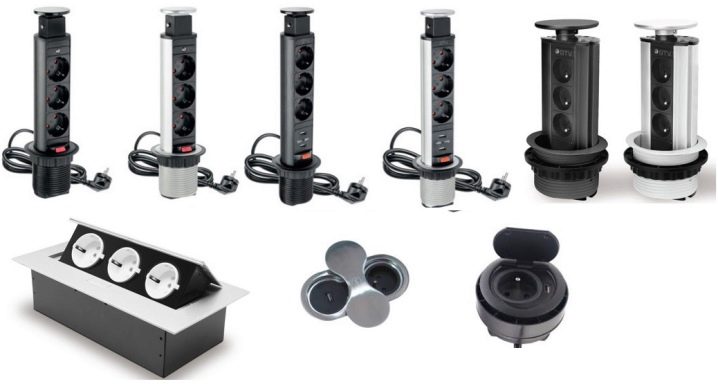
Peculiarities
There are certain rules for installing outlets, dictated by ease of handling and safety. It is considered optimal to place the sockets in such a position that all kitchen appliances can be located on three levels:
- bottom;
- average;
- upper.
Appliances such as a washing machine, dishwasher, oven or electric stove can be attributed to the lower connection level.


In the middle tier there are household appliances that can be placed on the countertop:
- coffee maker;
- Electric kettle;
- toaster;
- blender;
- electric oven;
- microwave;
- multicooker.
Equipment such as hoods, lighting and air conditioning systems are referred to the upper level.

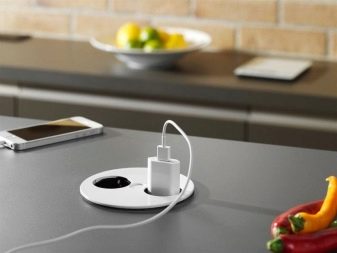
The worktop has sockets for the middle level of appliances. They can be sunk into the work surface of the table or placed on an apron. This is the most popular option for installing built-in units in kitchen furniture.
Varieties
Since the use of extension cords in the kitchen creates inconvenience when moving and preparing food, built-in sockets are popular with housewives. Such devices, depending on the location, are divided into two types:
- vertical;
- horizontal.
Vertical outlets can have a variety of connector configurations. In the lower models, the forks can be positioned around the entire circumference, and in the higher ones they simply go from top to bottom.
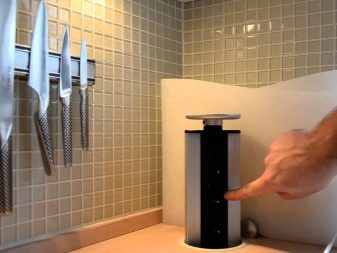

With a horizontal arrangement, there may be several places for a conventional plug. But there are types of sockets with one connector for a standard plug and additional USB ports, that is, places for connecting the Internet and HDMI outputs.
There is also a division of the sockets built into the tabletop by the type of design features:
- retractable;
- swivel.
Retractable models can rotate 360 degrees around their axis, and can rotate only halfway - 180 degrees. These kinds of devices often have a built-in backlight.
Swivel sockets are considered more reliable and durable. But it is necessary to note certain difficulties that may arise when connecting side types of plugs.
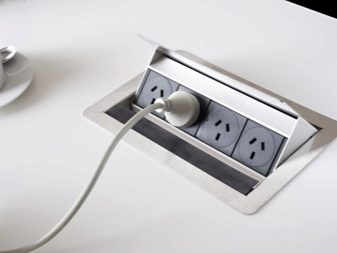
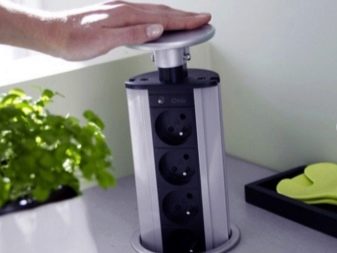
Regardless of the type, built-in sockets have a number of advantages over an extension cord. And the main one is the ability to effectively organize the workspace on the kitchen table, even if its dimensions are small and the configuration is non-standard. Moreover, the appearance of such a device is much more modern and aesthetically pleasing. The functional design of the built-in sockets is an order of magnitude higher, as well as the level of security. And this is especially important in conditions when moisture is periodically present near the device. Safety is also important when there are small children in the house.
Manufacturers
The production of such advanced devices has been mastered mainly by European countries.
The highest quality products are produced in the following countries:
- Germany;
- Sweden;
- Italy.
There are also devices made in China on sale. However, the level of reliability and safety of Chinese devices is much lower than that of European ones. Their use can be fraught with the occurrence of short circuits or breakdowns of the case, made of cheap plastic.

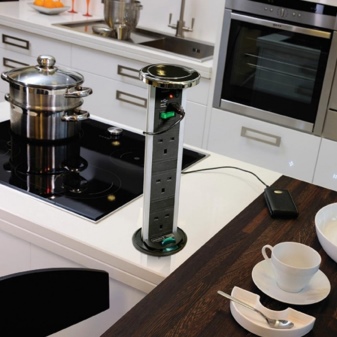
Evoline stands out from the German manufacturers on the domestic market.
It offers a wide range of built-in units:
- open sockets;
- vertical blocks;
- horizontal rectangular devices;
- cylindrical devices of horizontal type.
One of the most famous Swedish companies is Kondator. The designs of their blocks are equipped with connectors for different purposes. With a large number of household appliances, this option is the most functional.
The Italian company Simon also offers built-in units of increased functionality to domestic consumers. Such devices can be placed not only in the kitchen countertop, but also in office furniture.
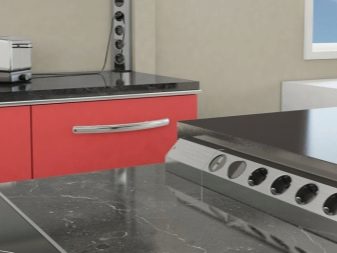
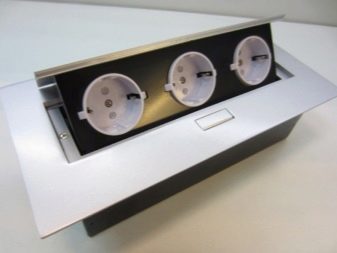
Choice
In order for the built-in unit to be better combined with the table top and at the same time be as functional as possible, there are several key conditions to consider.
- The total power of all electrical appliances that are supposed to be used. This is necessary so as not to cause overvoltage in the apartment (house).
- A one-time load that a particular unit can withstand. This information must be included in the instructions for the device.
- The number and type of connectors required. This indicator depends on whether a TV, the Internet, or only household appliances should work in the kitchen.
- Availability of additional functions. For example, pulling out the plug when the appliance is turned off. This is not only very convenient in itself, but also helps not to leave the devices on.
- The color and pattern of the cover of the built-in unit, which must either match the worktop, or go well with the details of the kitchen set. For example, with handles.
- Manufacturing company. The functionality, style, durability and safety of the device depend on this item.
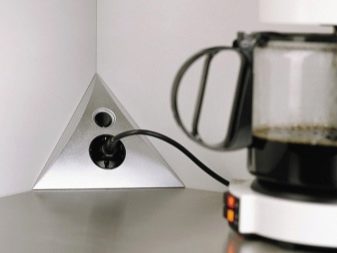

It is best to buy devices from those companies whose brand has been known for a long time. In this case, you can be sure of the high quality of the devices, since companies with a well-known name value their reputation. In addition, this option allows you to get a guarantee from the manufacturer, so that in case of a defect, you can exchange or return the goods without much difficulty.
However, do not completely trust the manufacturer or seller. When buying, it is still necessary to conduct a preliminary inspection of the product. It should not have any mechanical damage, such as chips or cracks.
You also need to pay special attention to the labeling of the block. It can be used to determine the authenticity of the brand. Large firms do it using stamping, not ink seals or stickers.
It is worth checking the equipment of the device. All connections and fasteners must be in the kit. Otherwise, you must immediately inform the seller about the shortage. After all, after the purchase, it will be difficult to prove the absence of components.
And finally, the main thing is to check the functionality of the outlet. The seller is obliged to demonstrate that the unit is working properly by connecting it to the electrical connector.
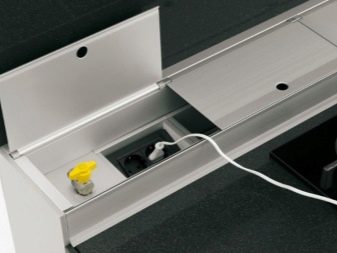

Installation of flush-mounted sockets
The first step in installing a built-in socket is to mark the hole for the device, which then needs to be cut out. If the hole is a circle, then a drill with a special round nozzle of the required diameter can be used for work. If the socket has an angular shape, then a jigsaw with a suitable file is used for work.
Then, using special fasteners that should be included in the set, the block is fixed in the hole in the table top. Of course, planning the location of the outlet when designing a headset is an ideal option. This makes it much easier to plan the process of connecting equipment, taking into account the specifics of the model. Electrical wires can be hidden inside a desk or cabinet. With such an installation, you need to fix them with special plastic clips along the inner surface of the furniture so that they do not dangle.

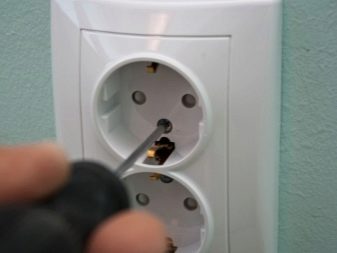
In addition, you can place the wires in a special box, which not only creates another layer of insulation, but also helps to complement the neat and aesthetic look of the kitchen. A good option can be broaching the wires under the baseboard.
Recessed sockets will perfectly fit into the interior of any kitchen and will help to preserve the maximum space required for cooking and relaxation.
For information on how to build a kitchen outlet block into a worktop, see the next video.













The comment was sent successfully.